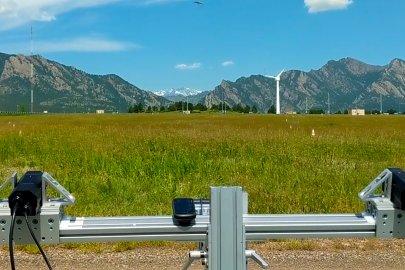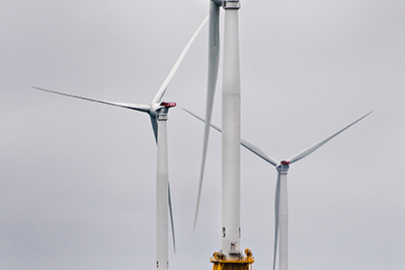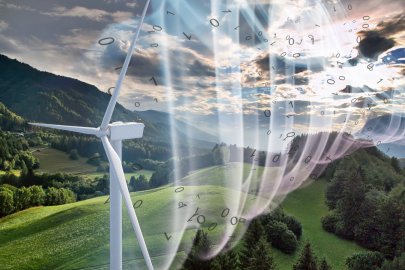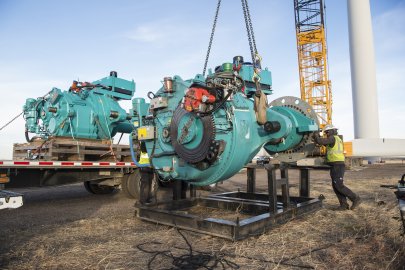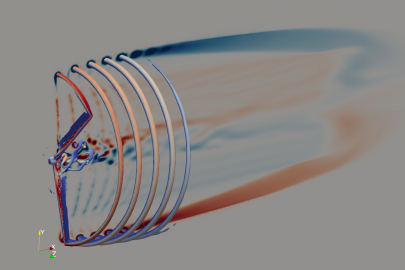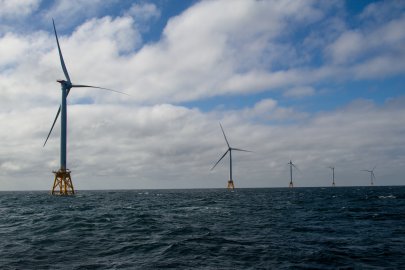Microgrids, Infrastructure Resilience & Advanced Controls Launchpad project supports distributed wind industry.
Wind Energy Technologies Office
October 13, 2020Microgrids, Infrastructure Resilience & Advanced Controls Launchpad project supports distributed wind industry through cybersecurity, advanced controls, and valuation R&D
As more people look to distributed renewable energy to power homes, businesses, and communities, they often choose solar photovoltaic systems over wind turbines.
Distributed wind is less prevalent than solar, in part because wind presents a number of challenges, including siting, ease of installation, and finding the right-sized, commercially available wind turbine to match power needs, according to Jake Gentle, wind program manager at Idaho National Laboratory (INL).
Still, in locations with consistent wind, wind turbines offer several advantages, including greater long-term cost savings. Wind energy can provide grid support increasing the value of hybrid energy systems, such as wind plus solar.
To help advance cybersecurity for distributed wind power, an INL team is collaborating with researchers at three other National Laboratories and industry through the Microgrids, Infrastructure Resilience, and Advanced Controls Launchpad (MIRACL) project. The INL team recently launched a website focused on its cybersecurity and resilience efforts within MIRACL.
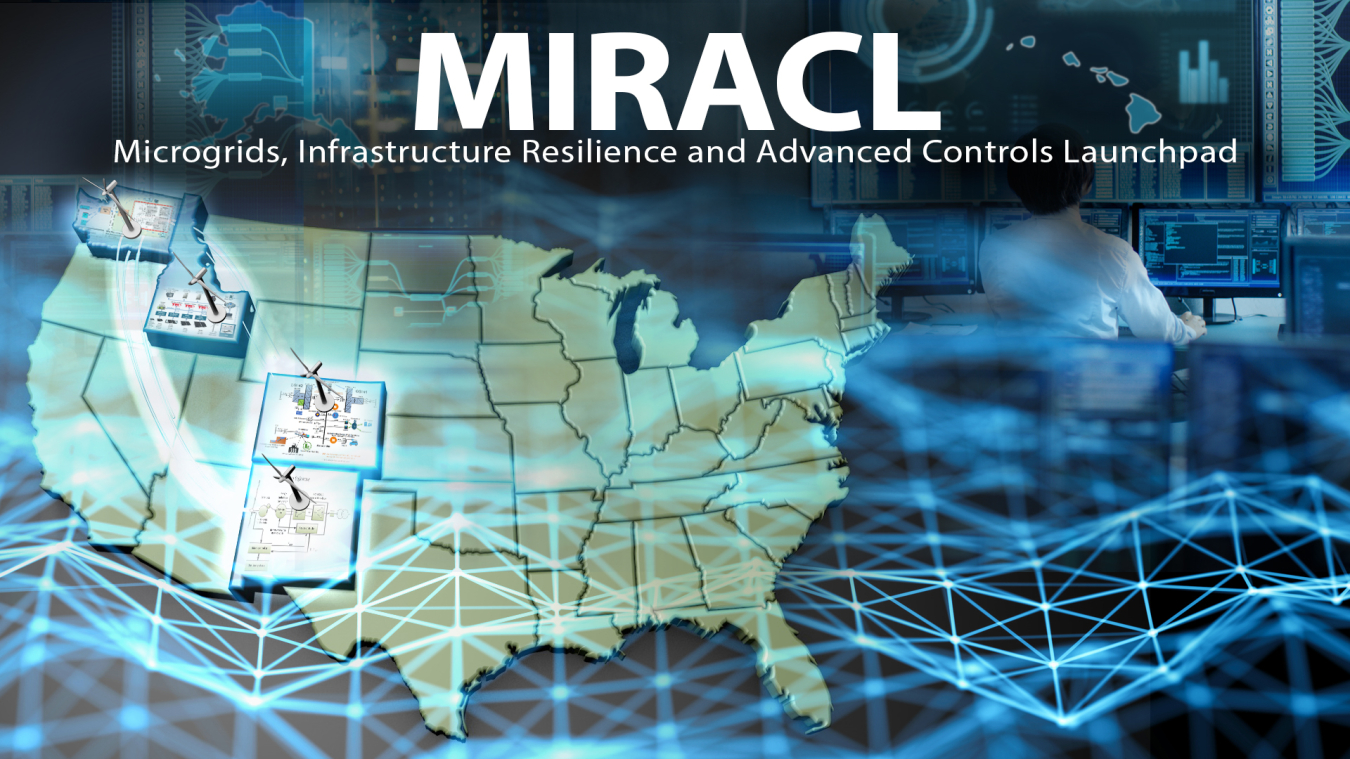
To help advance cybersecurity for distributed wind power, an INL team is collaborating with researchers at three other National Laboratories and industry through the MIRACL project. Illustration by INL
Together, the National Renewable Energy Laboratory, the Pacific Northwest National Laboratory, Sandia National Laboratories, and INL are conducting research and developing tools to help with the planning, design, and operation of distributed wind technologies. MIRACL provides opportunities for electric utilities and wind, microgrid, and distributed energy resource businesses to leverage national laboratory expertise and capabilities.
Funded through the U.S. Department of Energy’s Wind Energy Technologies Office, MIRACL focuses on three primary goals:
- Accurately valuing distributed wind’s contributions to grid systems
- Creating advanced control systems for hybrid wind systems
- Developing ways to understand and respond to cyberattacks.
Putting a Dollar Figure on Reliability
The full value of distributed wind is more than just the cost of the electricity that a wind facility produces. That’s why researchers are working to understand and evaluate other ways wind brings value to the grid.
For instance, distributed wind, when combined with other sources of distributed energy, can add adaptability and security to microgrids and distribution networks that serve critical loads or isolated customers, such as military bases, remote communities, university and hospital campuses, and commercial and industrial facilities.
“Because the wind blows nearly all the time in some places, you can couple wind with solar and storage and have a microgrid that is reliable, and secure,” Gentle said.
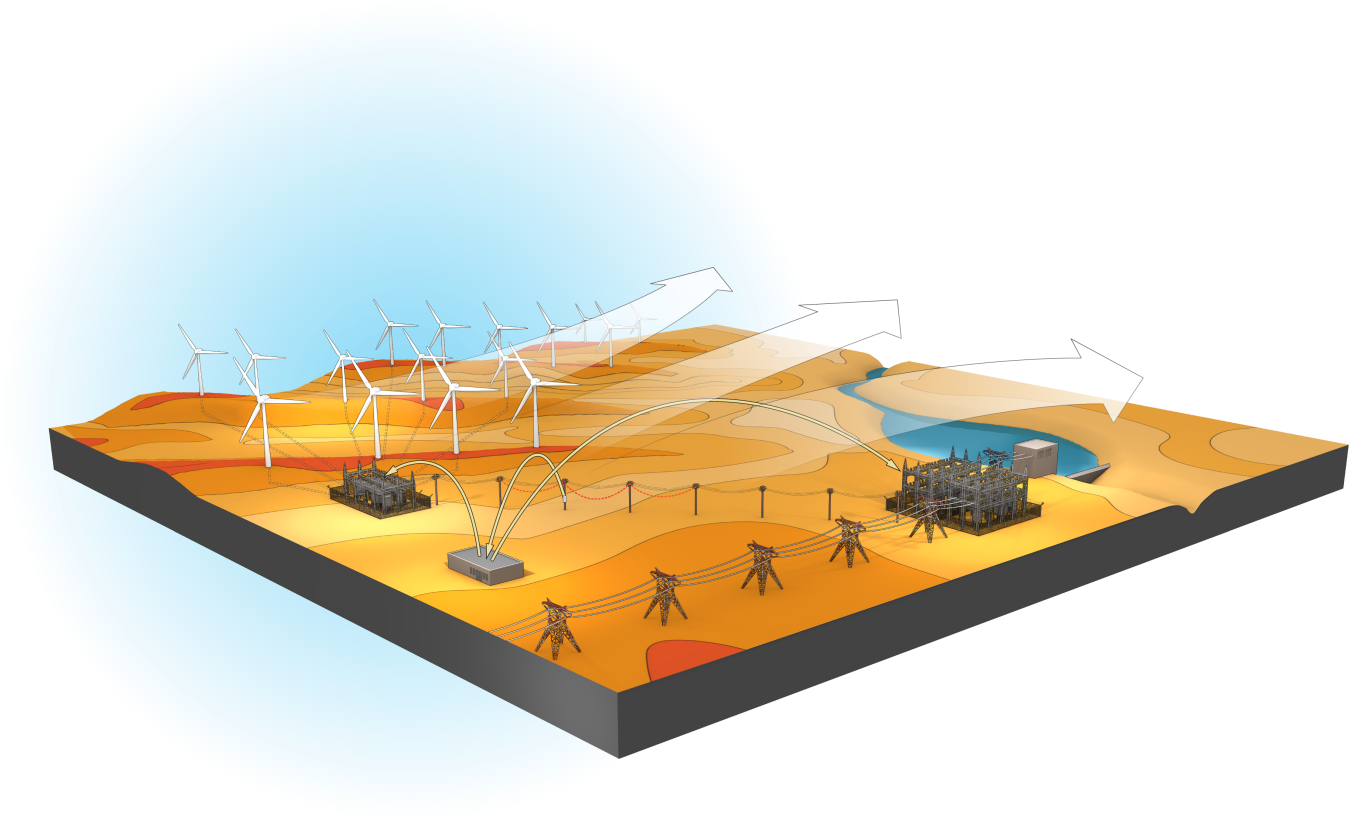
A big part of the MIRACL effort is using power systems models to simulate distributed wind facilities. Illustration by INL
Increasing the control and communications compatibility of wind turbines is crucial in hybrid-energy systems that include other kinds of distributed energy resources. Without advanced communications and controls that can respond in near-real time to changing conditions, the full value of distributed wind won’t be realized.
Finally, cybersecurity for wind power facilities, especially distributed wind facilities, lags behind other types of energy sources.
“Smaller distributed energy resources, like distributed wind, have not gotten as much focus on cybersecurity as larger facilities within the grid,” said Stephen Bukowski, a senior power systems engineer at INL. “This is due, in part, to regulations. However, there has been a growing interest in securing all aspects of the grid, especially as adversaries have begun focusing on some of these less-visible connections and components.”
Collaborative Modeling and Simulation
A big part of the MIRACL effort is using power systems models to simulate distributed wind facilities. Researchers are working together using PNNL’s simulated microgrid platform in conjunction with INL’s physical microgrid and the MIRACL Data Hub.
The MIRACL Data Hub, hosted at INL’s Collaborative Computing Center, gives researchers from the different laboratories access to high-performance computing capabilities in a collaborative environment where they can share data, models, simulation results, and physical assets for research, demonstration, and validation purposes. Researchers plan to use the MIRACL Data Hub to work more closely with industry and academia.
For more information, or to review the MIRACL webinar from March 2020, visit INL’s MIRACL website.
Explore previous editions of the Wind R&D Newsletter or browse articles by topic:


